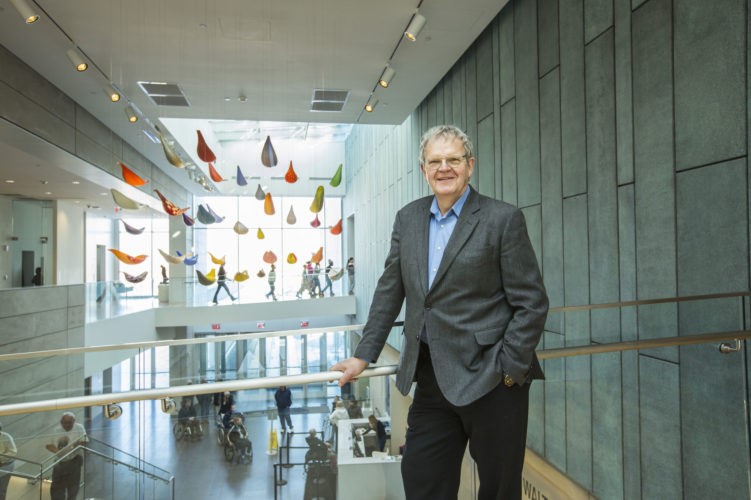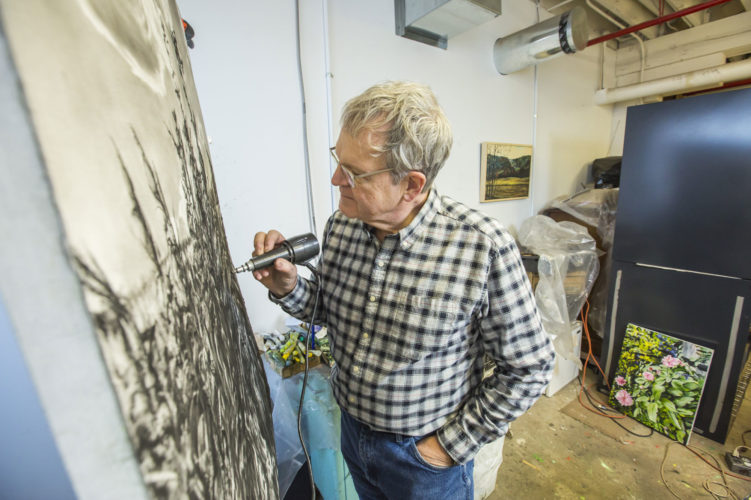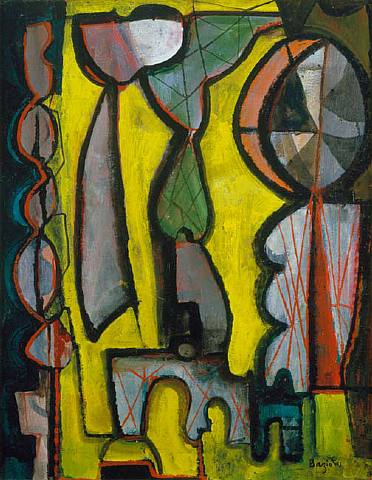
Rod Bouc, Executive Deputy Director of Operation and Chief Registrar. Photo by: Chris Casella.
During the museum closure we would like to take the time to introduce you to some CMA staff members, who you may or may not have seen during a visit at the Museum, and let them tell you about their work, their creative interests, and what makes CMA such a special place for our community.
Staff Spotlight with Rod Bouc
Executive Deputy Director of Operation and Chief Registrar
How many job titles have you held here at the museum? Which one has been your favorite so far?
Call me whatever you want. Just keep sending the check.
1. Assistant to the Registrar
2. Assistant Registrar (no other Registrars at the time)(also one of my favorites because I had no one to assist for like 5 years)
3. Permanent Collections Registrar
4. Chief Registrar/LAN Manager (I bought the first computer at the Museum)
5. Acting Director of Curatorial & Registrar
6. Director of Curatorial
7. Deputy Director of Operations
8. Executive Deputy Director of Operation and Chief Registrar (Favorite, because it’s so long)
When did you move to Columbus? How long have you worked for CMA?
Moved from Nebraska to Columbus the summer of 1977 to seek and complete my MFA in Painting and Drawing at OSU. I’ve worked for CMA over 32 years. (And I’ve had many lives and positions before the Museum. I am OLD).

Do you think your career path has allowed you to experience greater resources/inspiration as an artist?
Absolutely! Working as an art educator in a small nonprofit gallery on High Street really challenged me to be creative with no financial resources. I have been constantly exposed to some of the best fine art while doing art handling, installation, and transportation and seeing some of the best collection in New York, the Midwest, and Chicago. These experiences have challenged me to up my approach to my creativity and make my artwork better. While at the Museum I am constantly, every day, seeing and evaluating the art we all get to enjoy. Because we work with many people in the arts I’m aware of many of the resources that exist and can help with supporting my passion of making work.
How would your life be different had you chose being full time artist instead of working for a museum?
I consciously made the decision to make a living in other ways than selling my artwork. This allowed me the freedom to create what I wanted to without the pressure of sales to pay the bills. Having jobs in the arts also allowed me a source of income to pay for decent studios, pay for presentation material, photography, transportation and all other aspects of being an artist. I’ve also loved the jobs in the arts and they consistently have pushed me forward. Having a job can also impose on time to create. Everything in your life keeps you from being in the studio. That’s why it’s also important to have discipline. I’m ever grateful for the work ethic I learned while working on the farm in Nebraska. It has really helped me to never stay idle and get my butt to the studio and get reenergized by making work.
Tell us about an interesting experience you’ve had at CMA.
There really are so many that I can’t list them all here. When I first came to the Museum in 1987 we were tasked with insisting on and overseeing the climate and humidity control of a huge Chinese artifact exhibition called Son of Heaven. It was held at the abandoned Central High School building now COSI. I had been in Xian China in 1984 and saw the terra cotta soldiers in the excavation pits there. I never imagined that I would be handling some of the soldiers and costumes from the Forbidden City in Beijing, just a few years later. I thought then, hmmm, this is going to be an interesting job.
 What’s your favorite artwork/artist on view now (or in the collection) and why?I can’t possibly think of only one. I did, however, fall in love with the Baziotes, Woman at Window around 2008 when Nannette and I went to see it in New York at the Hollis Taggert Gallery. The photo does the painting no justice. It would be impossible to capture the translucence of its color by taking a picture of it. He worked in a stained glass studio and often captures those colors between colors. It’s a study in how important it is to be standing in front of an artwork rather than seeing it on a computer. It’s a pretty amazing painting.
What’s your favorite artwork/artist on view now (or in the collection) and why?I can’t possibly think of only one. I did, however, fall in love with the Baziotes, Woman at Window around 2008 when Nannette and I went to see it in New York at the Hollis Taggert Gallery. The photo does the painting no justice. It would be impossible to capture the translucence of its color by taking a picture of it. He worked in a stained glass studio and often captures those colors between colors. It’s a study in how important it is to be standing in front of an artwork rather than seeing it on a computer. It’s a pretty amazing painting.
What are you excited to see CMA do in the future?
I’m excited to see how far we can help regular folks understand why art is so important to us and could also be to them. I grew up knowing that I didn’t want to only work on a farm the rest of my life but I also wanted to spread the word as to how great and beautiful the country surroundings are. I would finally realize that painting was my passion. The art world I grew up in was only foreboding and elitist. I couldn’t understand where my place in that art world would ever be. Finally, I’m so proud, now, to work in a Museum that wants to make better connections with regular folks like me.
– Amber Wacker wears a few hats in the workforce, she exchanges a powder white hairnet for her careful scrutiny behind a desk as the Development Operations Coordinator at CMA. She is an aspiring traveler with endless desire to see the world, and lives in a mini jungle herself.
